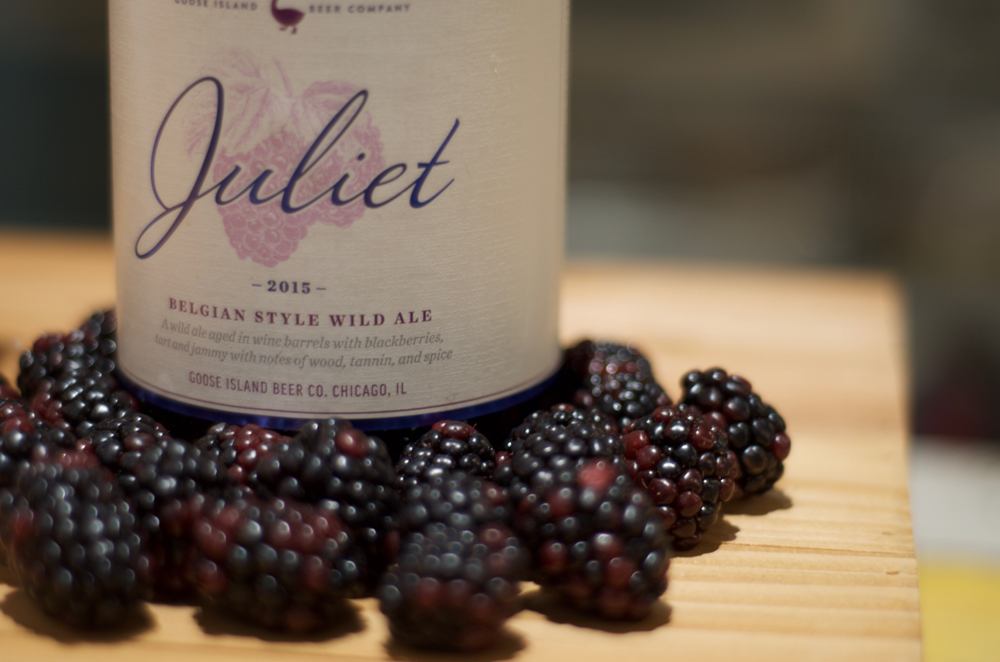by Brian Kowalczyk
When Goose Island brewed up its very first batch of Bourbon County Brand Stout and aged it in six barrels in 1992 they couldn’t have predicted the craze that barrel-aging would become in the last decade. Now with one of the largest barrel-aging programs in the U.S., it’s clear that they still saw it coming before most and embraced it fully.
Then brewmaster Greg Hall brewed the Bourbon County Brand Stout in celebration of the 1000th batch of beer produced at their Clybourn brewery. The first submission of his creation at the Great American Beer Fest in 1995 was actually disqualified because no one really knew what to do with it. As it was likely first of its kind, there were no style rules established for such a beer, so they walked away with an honorable mention. In 2006 it was awarded a gold at the World Beer Cup and a little murmur started to move through the craft beer scene in the U.S. Before long barrel-aging went from a tiny ripple to a massive swell.
Recognizing the coming wave, Goose Island expanded their barrel-aging program. They rolled out a completely different animal in 2009–a wild Belgian style wild ale aged for a year in cabernet wine barrels. The beer was given the name Juliet. They also added a bit of a twist by infusing it with fresh blackberries during secondary fermentation in the barrel. 8% ABV, 15 IBU, single-hopped with Pilgrim, Juliet is dry with a tinge of spice.
Lolita followed elder sister Juliet in 2010. Another Belgian style wild ale, but this time using raspberries and a more varied hop profile (Pilgrim, Styrian, Golding Celeia, Saaz). The raspberry aroma and flavor is quite prominent. Aged in oak Cabernet Sauvignon barrels, it’s a little darker than its sisters, relatively tart and finishes with a touch of spiciness. (ABV: 8.7%, 32 IBU)
In the same year, Madame Rose, a cherry version in the same vein as the previous two was released. A Belgian style brown single-hopped with Pilgrim, the reddish-brown beer is similar to a sour kriek. (ABV: 6.7% IBU: 25) Note: At the time of writing, Madame Rose was not available in Japan for purchase.
You can probably see the trend developing here, and so did Goose Island. Seemingly appropriate for the style of beers they were making, the feminine naming system stuck and in 2013 Gillian and Halia were born–both Belgian style farmhouse ales. Gillian was affectionately named for an hors d’œuvre that was a favorite of the wife of one of the brewers, Keith Gabbett, who made an attempt to mimic the taste in a beer. Single-hopped with Amarillo, and flavored with white pepper, honey and strawberries as the fruit of choice, it’s a bit like a strawberry champagne with a tart aroma and bite. The secondary fermentation is done in red wine barrels with Brettanomyces and a champagne yeast. (ABV: 8.7%, IBU 20)
The name for Halia was chosen to honor brewer Brian Taylor’s friend that had passed away. The word means “forever remembered” in the Hawaiian language. The departed was fond of peaches and hence the addition of that fruit in secondary fermentation. It’s also champagne-like–fruity and light in body and color. (ABV: 7.5%, IBU 11, single-hopped with Amarillo)
Goose Island celebrated the release of these beers, dubbed the “Sour Sisters”, in Japan with an event at Y.Y.G. Brewery in Shibuya on the 15th of this past December. Also in the Vintage Series are cousins Sofie and Matilda, both available in Japan.
The massive Goose Island Barrel House is a 12,000 sq. m. facility in Chicago that that the company uses specifically for barrel-aging. As nice as it would be to have these beers available off the shelf at all times of the year, due to the labor-intensive process and long lead time, we can only expect to see them in limited release. Some might see that as a bad thing, but anticipating each new batch and its unique characteristics most definitely has its good points. And it’s not like there is a dearth of other fine beers to try out there.
(Note: All beers tasted were 2015 vintage except Lolita, which was 2016. Expect the beers to vary somewhat by year as is common for barrel-aged brews.)





